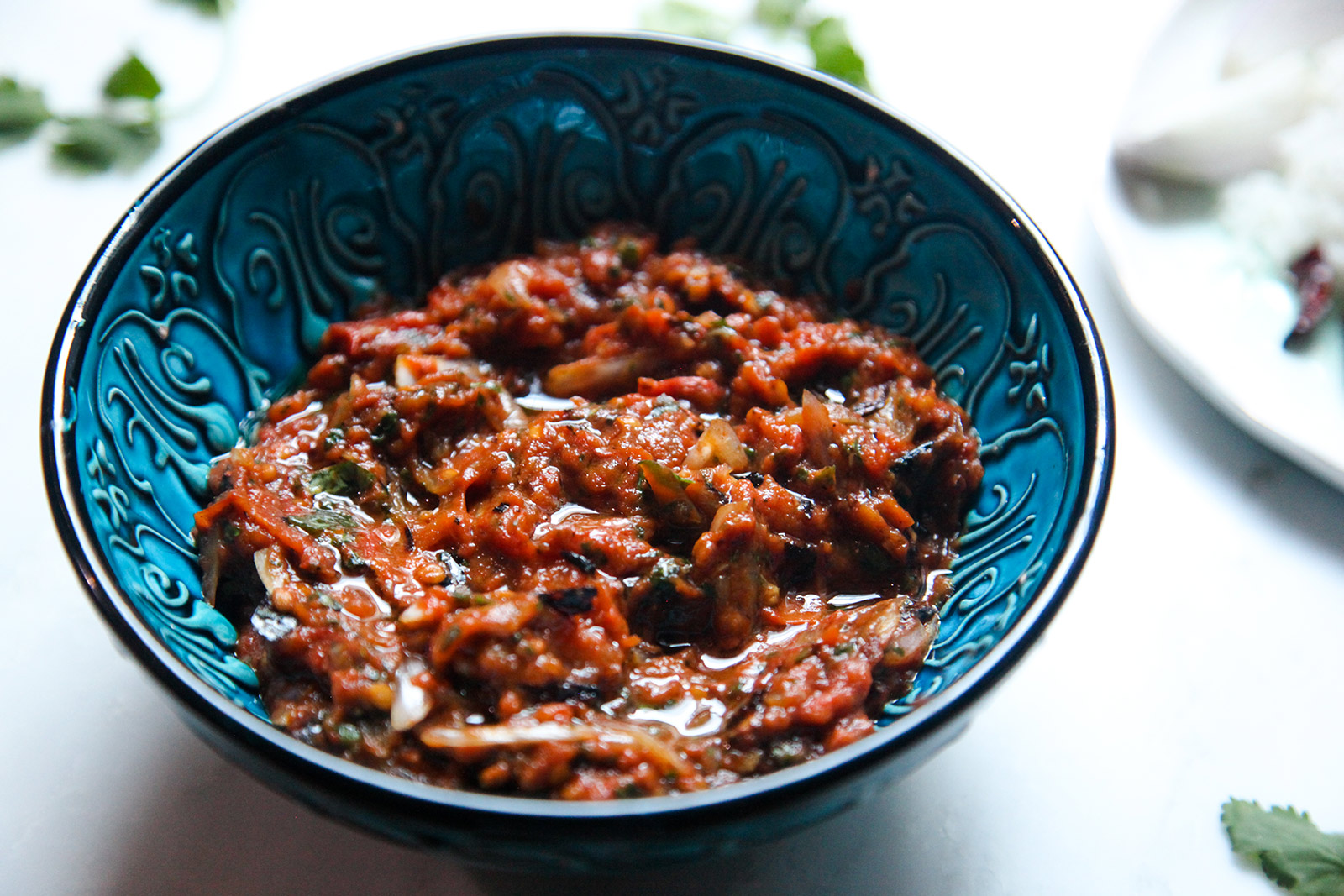Tomato Bhorta – Smashed Tomato with shallots & fresh herbs
Bangladeshi Tomato Bhorta
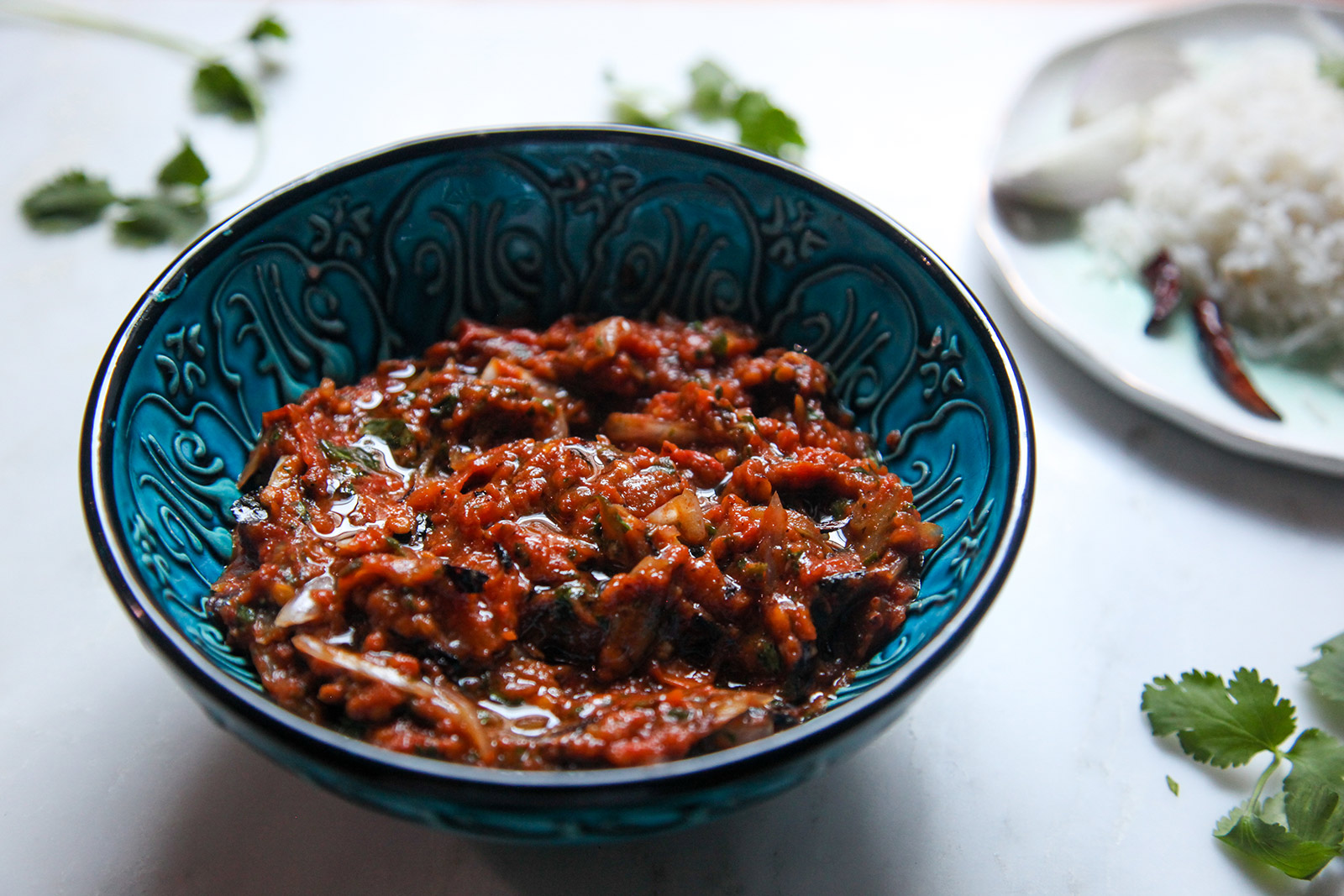
Recently, due to circumstances, for days and days I was eating meal after meal of heavy, overly salted, fast-ish food. I soon found myself fantasizing about the simplest dishes – food that’s light, comforting, easy on my body and soul (and effort). As a Bangladeshi, for me that meant bhortas. And for whatever reason, I was craving and salivating thinking of a tomato bhorta (was my body telling me it needed all those vitamins, minerals and antioxidants from tomatoes?).
Since a bhorta is so simple, does one even need a recipe? Most Bangladeshis probably don’t. Although a Bangladeshi friend of mine did message me about a month ago asking how to make a tomato bhorta… he makes very complex dishes, but as I know too well myself sometimes it’s the simplest ones that elude us. So, I’ve decided to share the recipe for a tomato bhorta, and more importantly this is my paean to bhortas!
What is a bhorta?
Bhortas are a staple of Bangladeshi cuisine. They are a category of side dishes composed of one main ingredient (usually a vegetable, but can also be fish, or even dal/lentils), usually roasted, charred, boiled, fried or cooked simply without any (or few) spices, and then smashed together with raw shallots, chilies, cilantro, and a bit of mustard oil. We Bengalis love mustard oil, it adds a wasabi-like zing to the simple homey bhortas. If mustard oil seems scary, or isn’t available, olive oil can be used instead. Once you’ve made one kind of bhorta, like the tomato bhorta here, you can apply the overall technique to other vegetables and make bhortas out of them.
The humble bhorta is truly a dish that transcends social boundaries, it’s beloved by the rich and the less fortunate, educated and uneducated. There is no “elevating” a bhorta, the best bhortas are the traditional, classic ones, that have been made the same way for generations. Even so, some people’s bhortas are just amazing (likely the result of slight variations in technique, rather than ingredients). One of my mom’s cousins, my Chobi Mami, who lives in Dhaka, is famous for her bhortas; she would regularly have big parties where she would make at least ten types of bhortas, in addition to fancy party dishes. Often when I miss my mom (although she passed away some years ago at this point, I still miss her deeply), I open up one of her emails; she would write detailed emails, describing what they had been up to, and her voice comes through so clearly in those – she was just so ALIVE always, full of life, joy, love and empathy. I have at least a couple of emails where she describes a lively party they had just come back from at Chobi Mami’s house, and she goes into raptures about her fabulous bhortas.

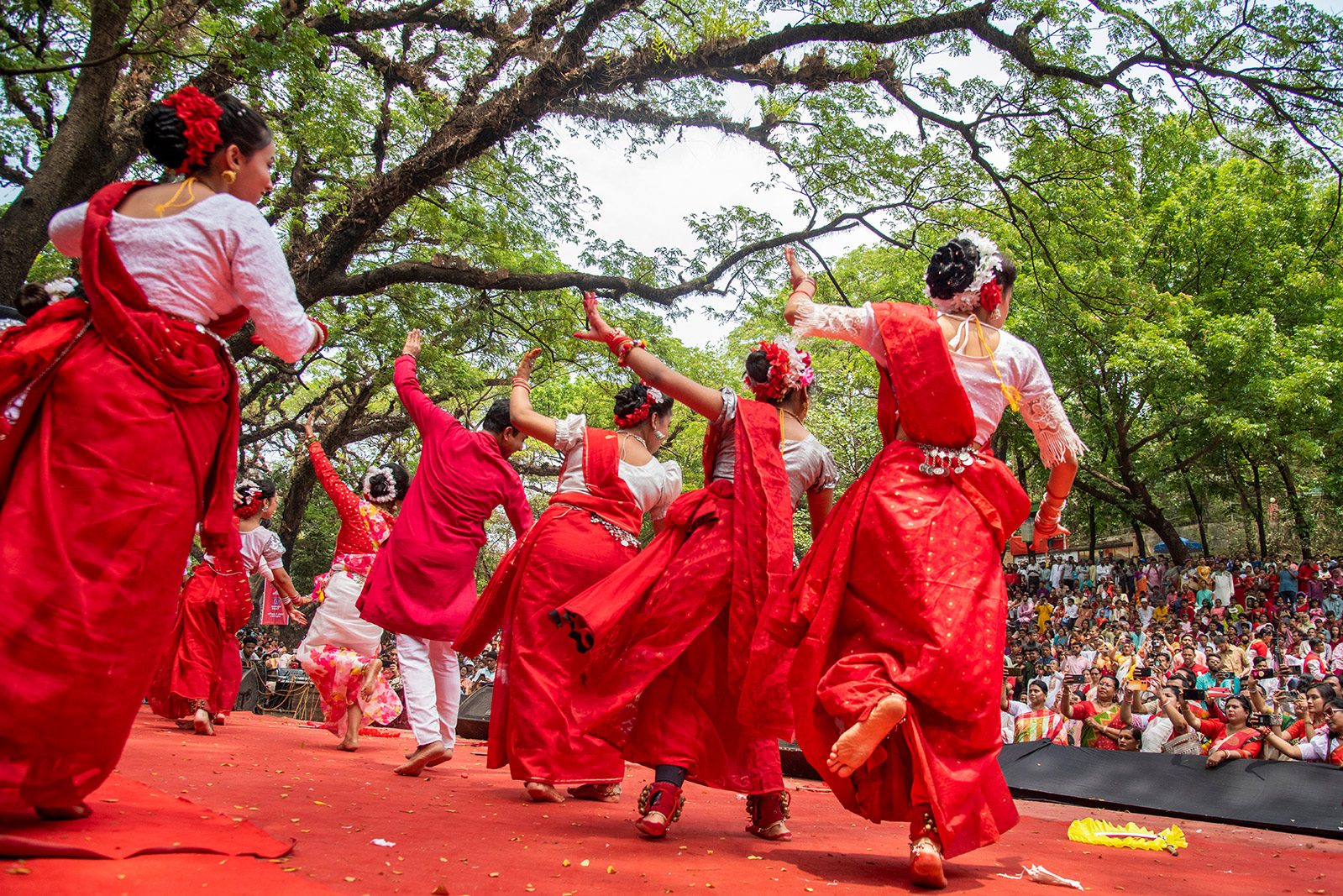
So, not only are bhortas a homey staple, but we Bangladeshis also celebrate the bhorta. In fact, one of the biggest holidays of the year in Bangladesh features bhortas as the culinary highlight. Pohela Boishakh, the Bengali New Year, falls on April 14th coinciding with the season of renewal, spring. It’s a national holiday in Bangladesh, secular and celebrated by people of all religions – women traditionally wear red and white saris and flower jewelry, men wear red and white kurtas/tunics, colorful alpona /murals are painted on the street surfaces (which look simply stunning), there are festivities of massive colorful parades organized by art students, huge outdoor book fairs, street fairs, music and dance events, and of course parties all over the city with bhortas as the main feature. Dozens of bhortas are prepared by the hosts, alongside fried fish and other dishes.
When I was growing up in Bangladesh, we would almost always have a bhorta on the table for lunch. The bhortas would vary by season, by the ingredient that was a specialty of the time or that was available in the market. During the monsoon season, my mom would make khichuri (rice and lentils cooked together, kind of like a risotto) and it would be accompanied by fried fish and usually a couple of bhortas – alu (potato) bhorta and begun (eggplant) bhorta. As the weather grew cooler, tomatoes would become available. Back then the local tomatoes were very flavorful. We would have a variety of dishes in those months where tomatoes were the main ingredient, such as tomato dolma (tomatoes stuffed with ground meat), tomato khatta (fish cooked in light, tangy tomato broth), and for lunch often a tomato bhorta would be made.

Since tomatoes are the star of the tomato bhorta, it’s helpful to have good quality flavorful tomatoes. Here in NYC, I am lucky to live near one of the best farmer’s markets; it’s so much more fun to shop at the farmer’s market than at a grocery store (although I do shop at grocery stores all the time!). I was able to find some of the last tomatoes of the season in a couple of stalls. I bought a few, along with shallots and cilantro.

I got home and happily put together my bhorta. The most time-consuming part of the tomato bhorta is cooking the tomatoes till they get soft and disintegrate, which takes about half an hour. Otherwise, it’s a fairly effortless dish. If you’ve never had tomato bhorta, but know what a chutney is, it’s not too far off; however, it’s not so dense and concentrated, and not as sweet. The end result is so delicious! It’s light and fresh, slightly tart and sweet, a bit smoky (from the charred dried red chilies), a little spicy hot, with a bite from the shallots and a zing from the mustard oil. The rich red color, resulting from the tomatoes cooking down, makes it a beautiful dish as well.
Note that the ingredient amounts are customizable. If you like hot and spicy food, add more chilies. If you like raw shallots, add more. Also, you don’t have to eat it Bangladeshi style – the tomato bhorta will pair well with a variety of dishes, almost like a dense, richer, sweeter kind of salsa.

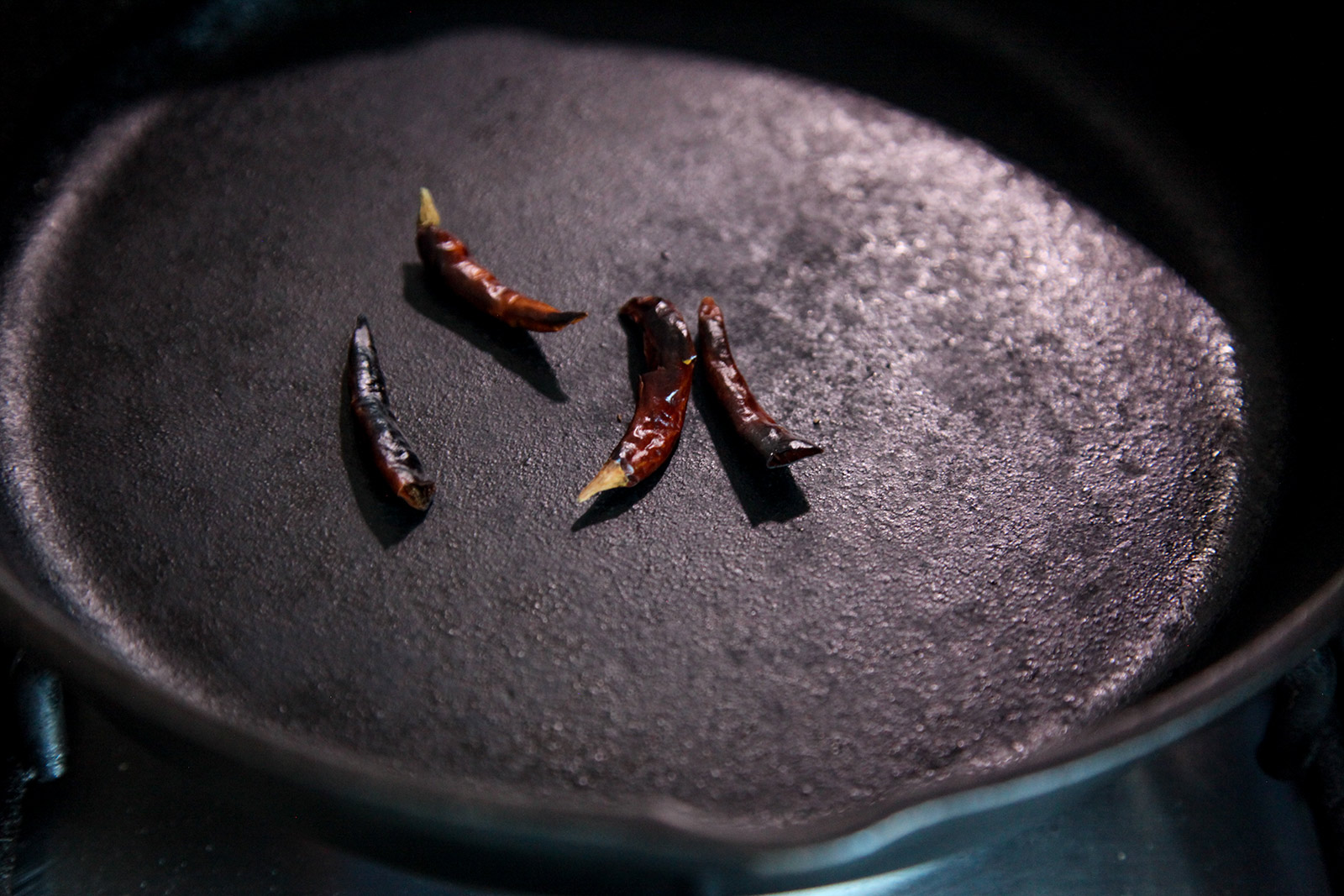
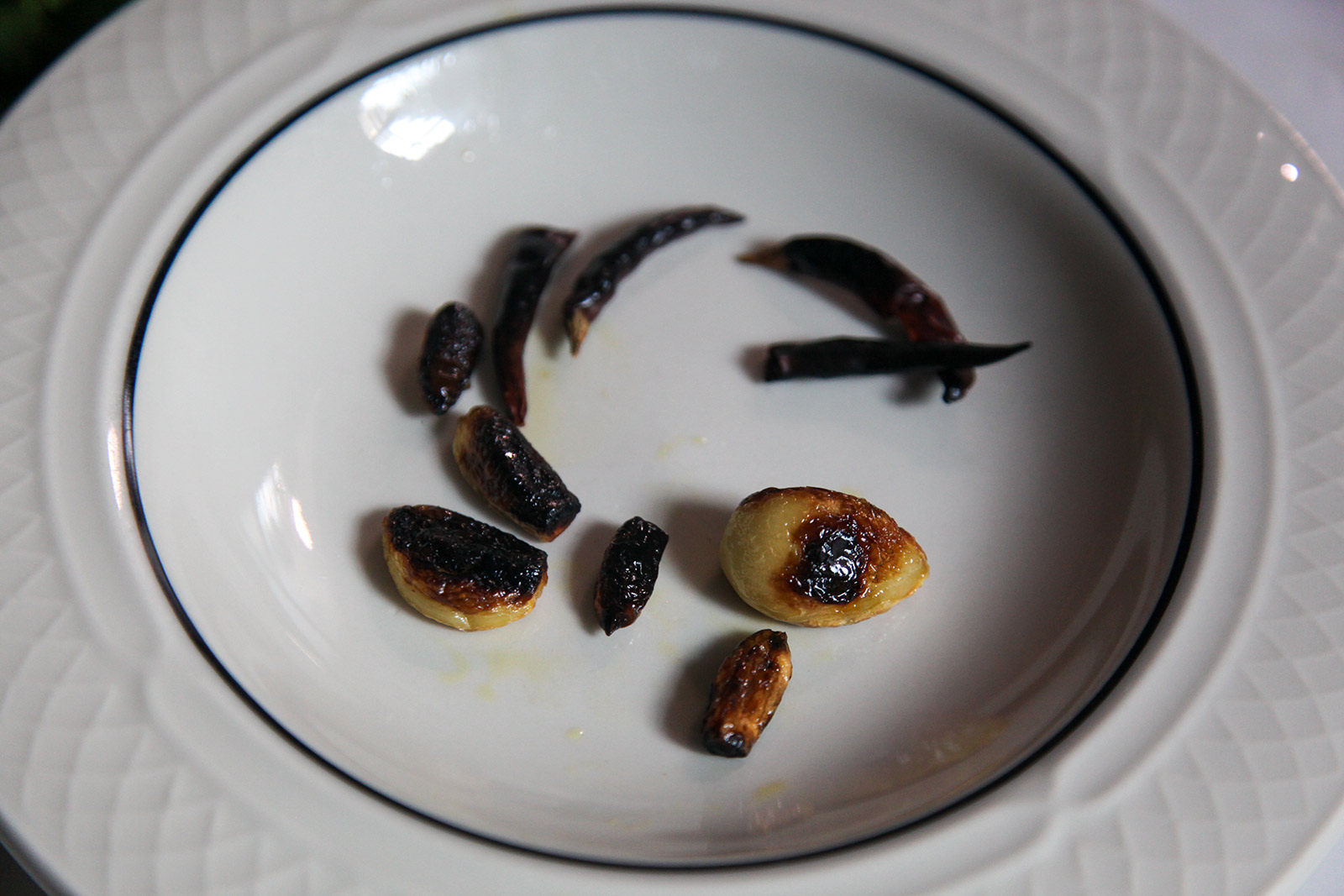
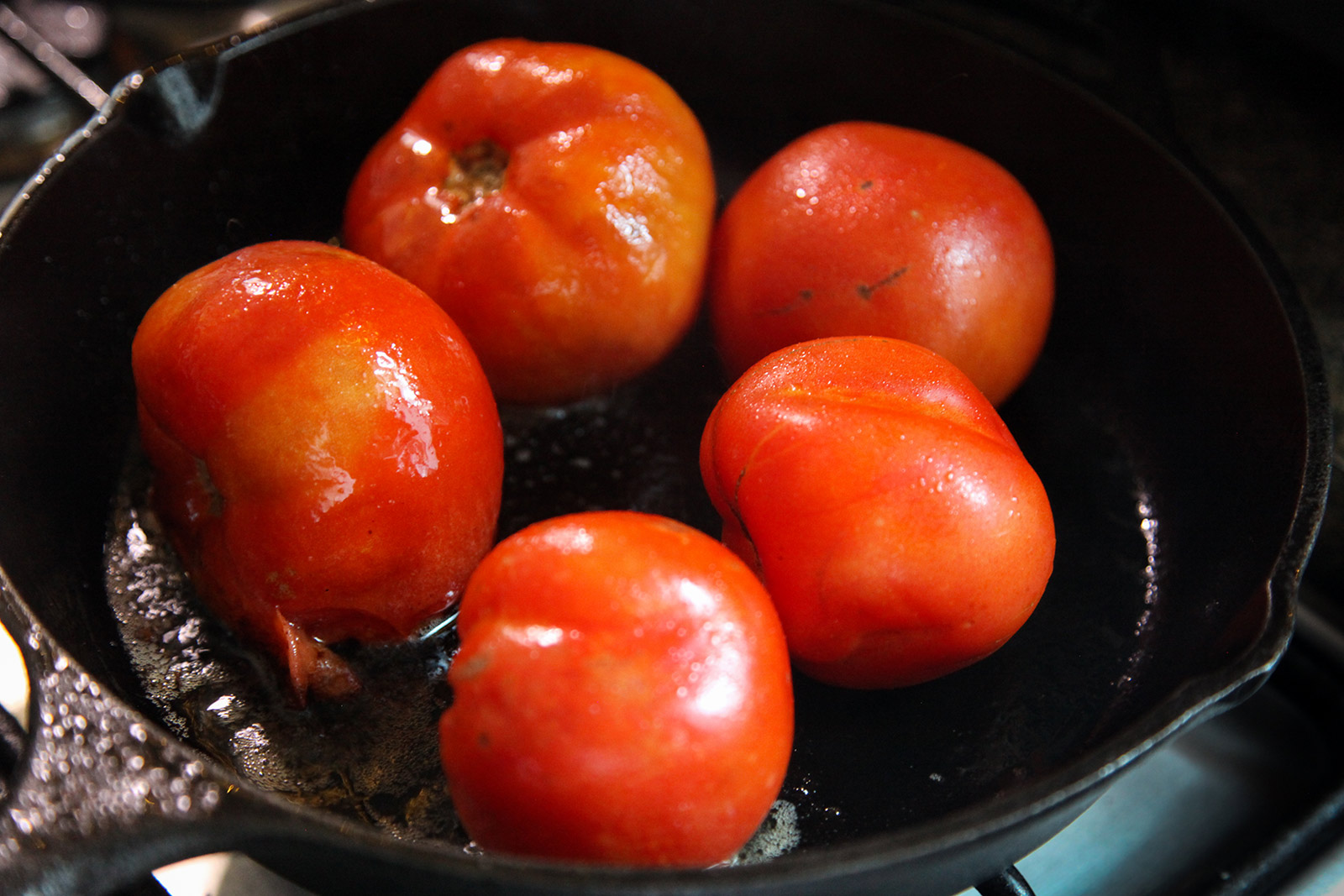
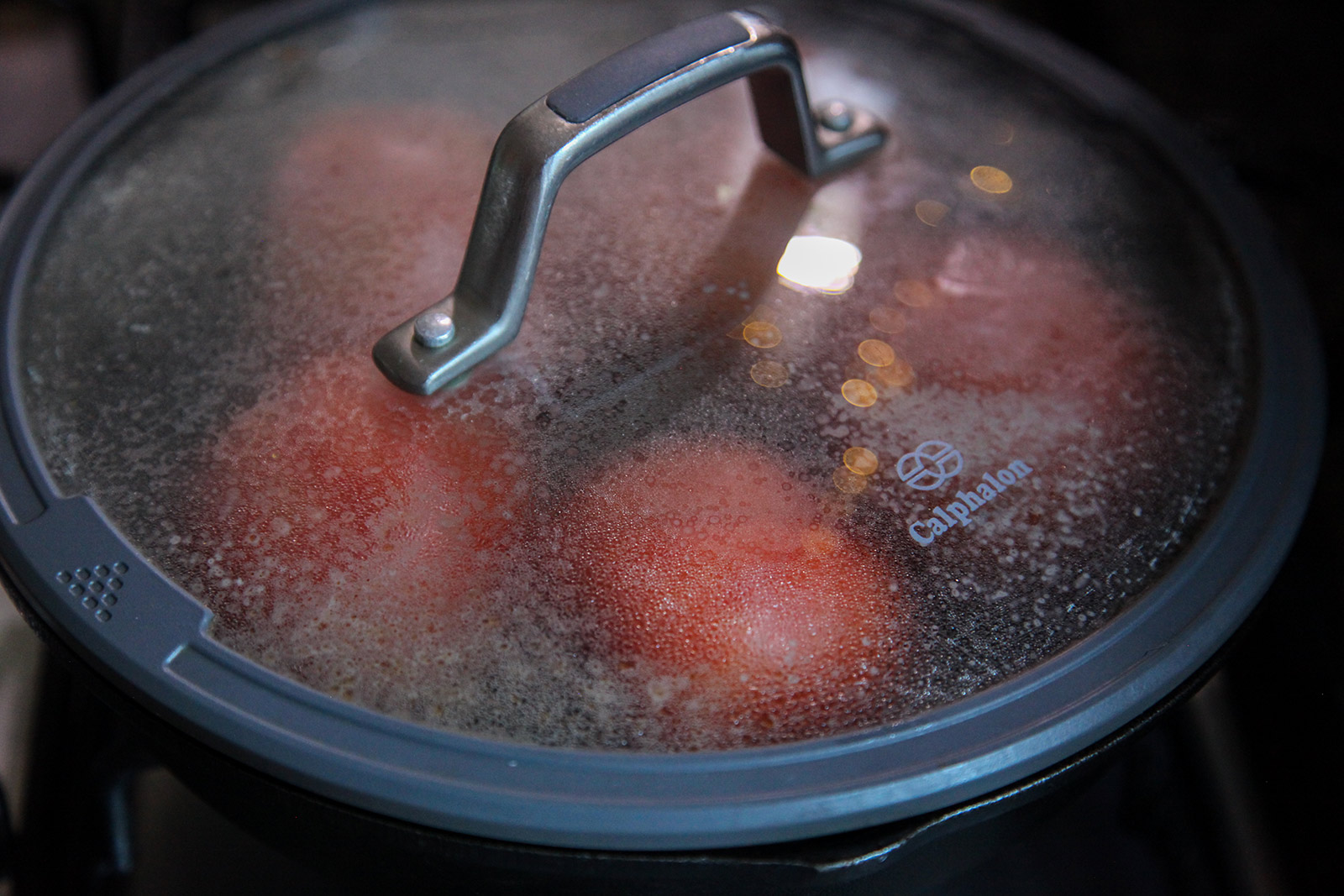
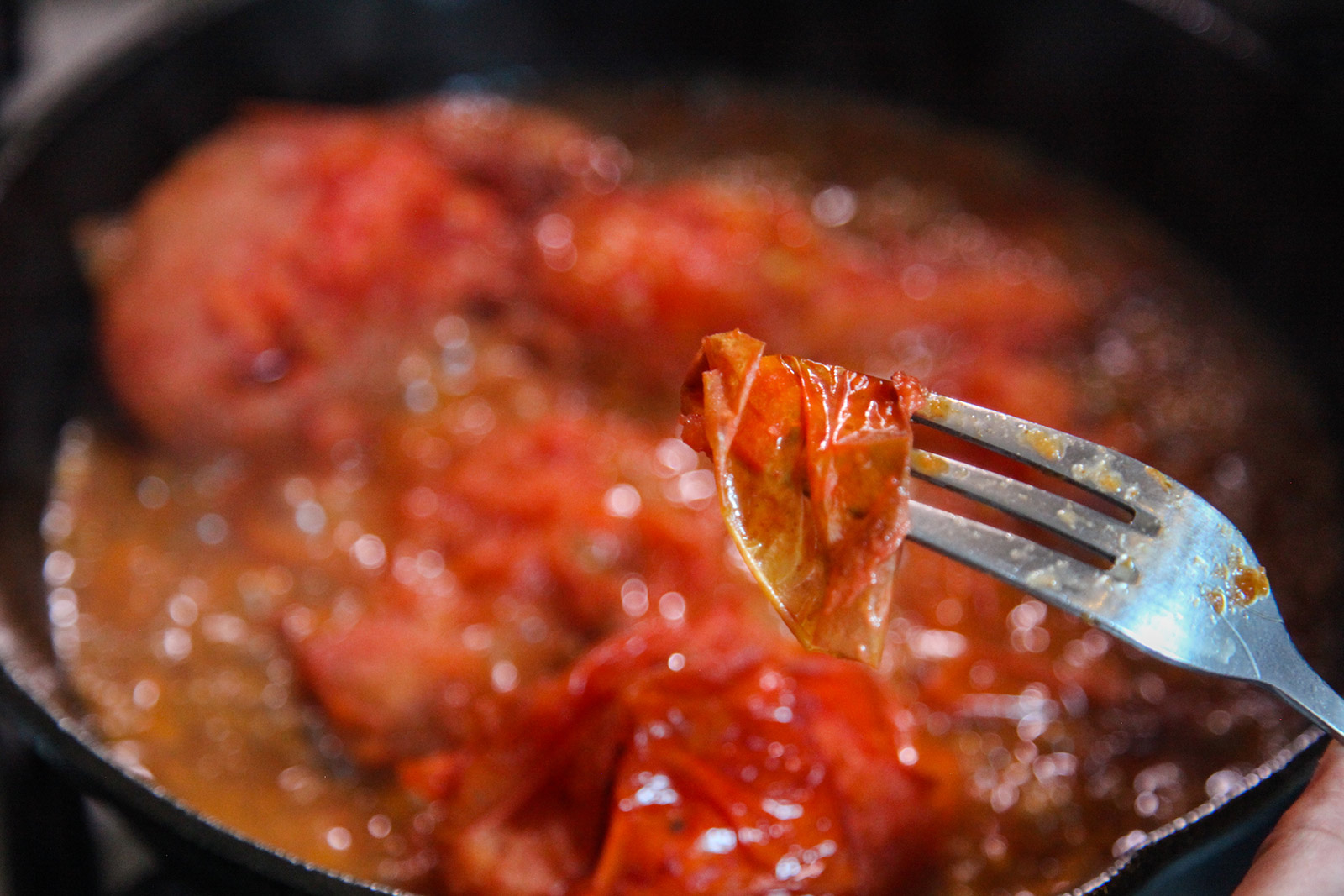
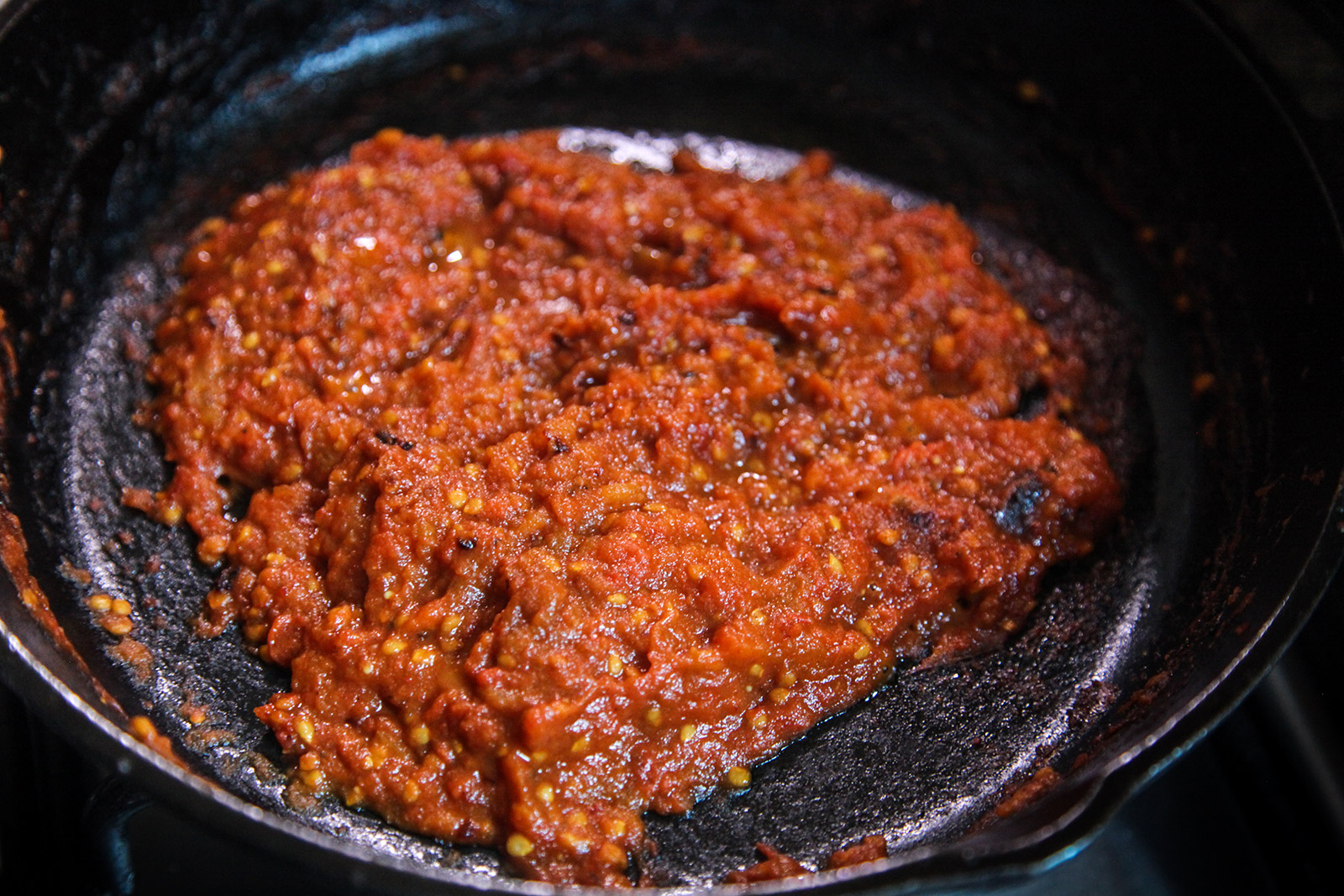
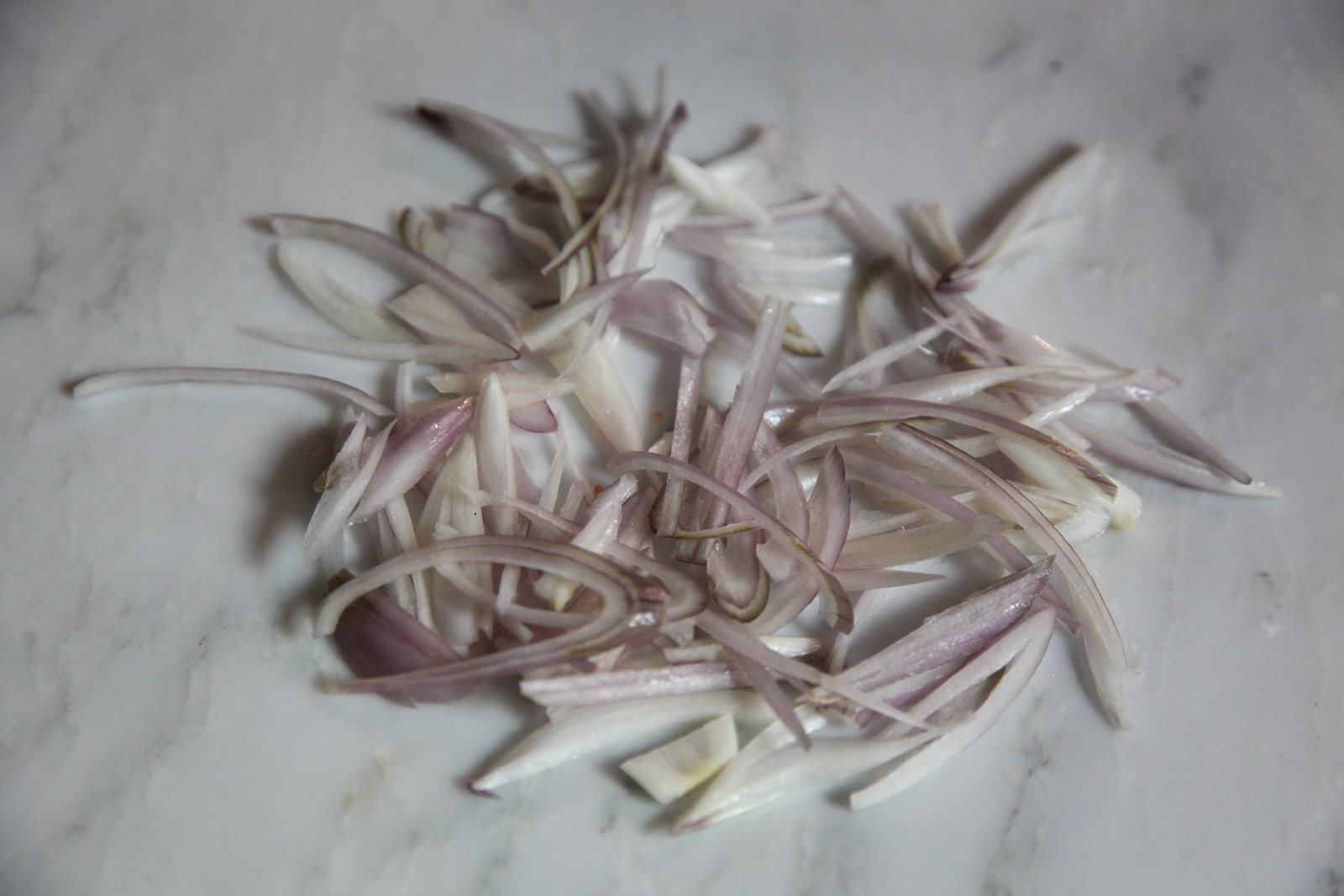
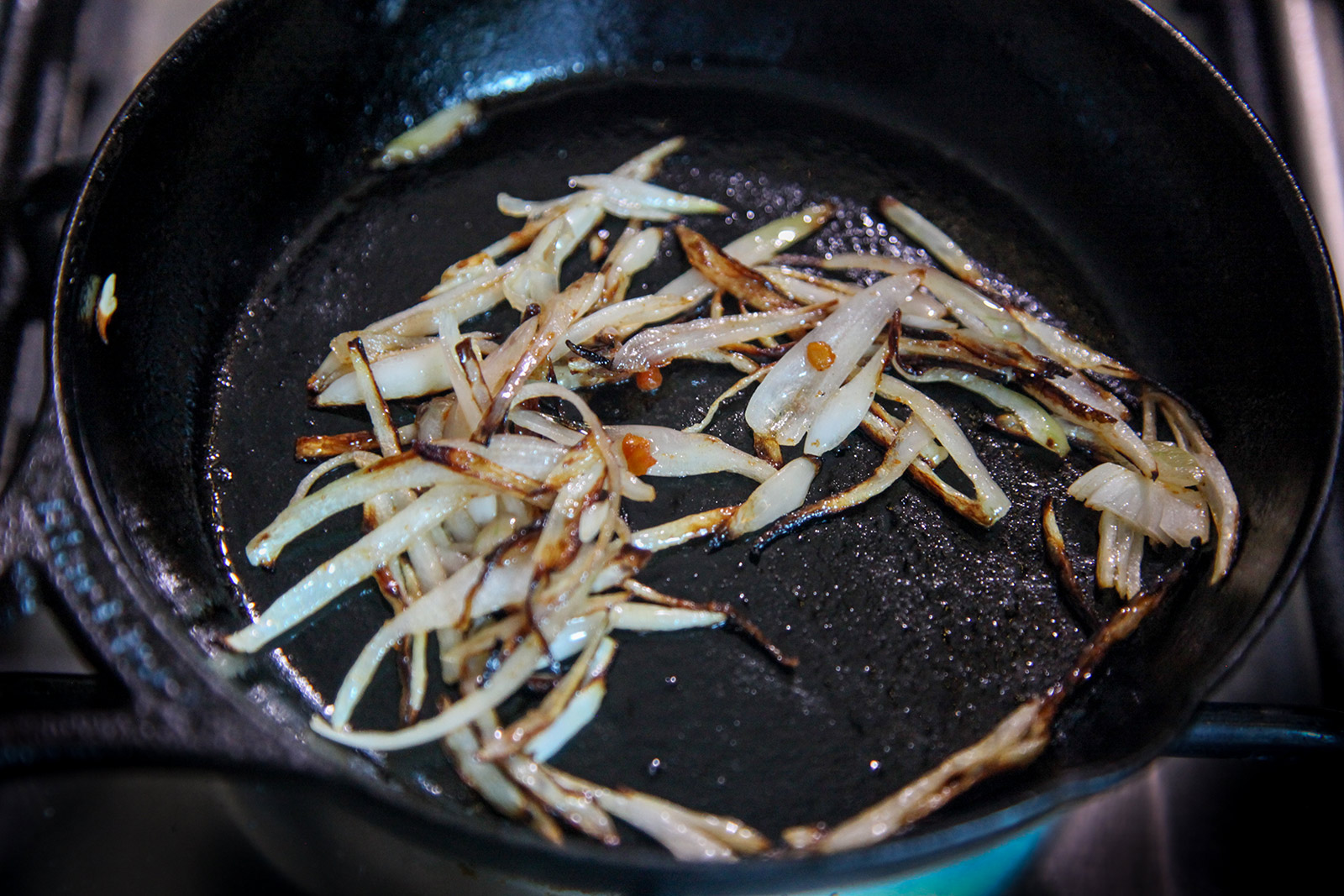
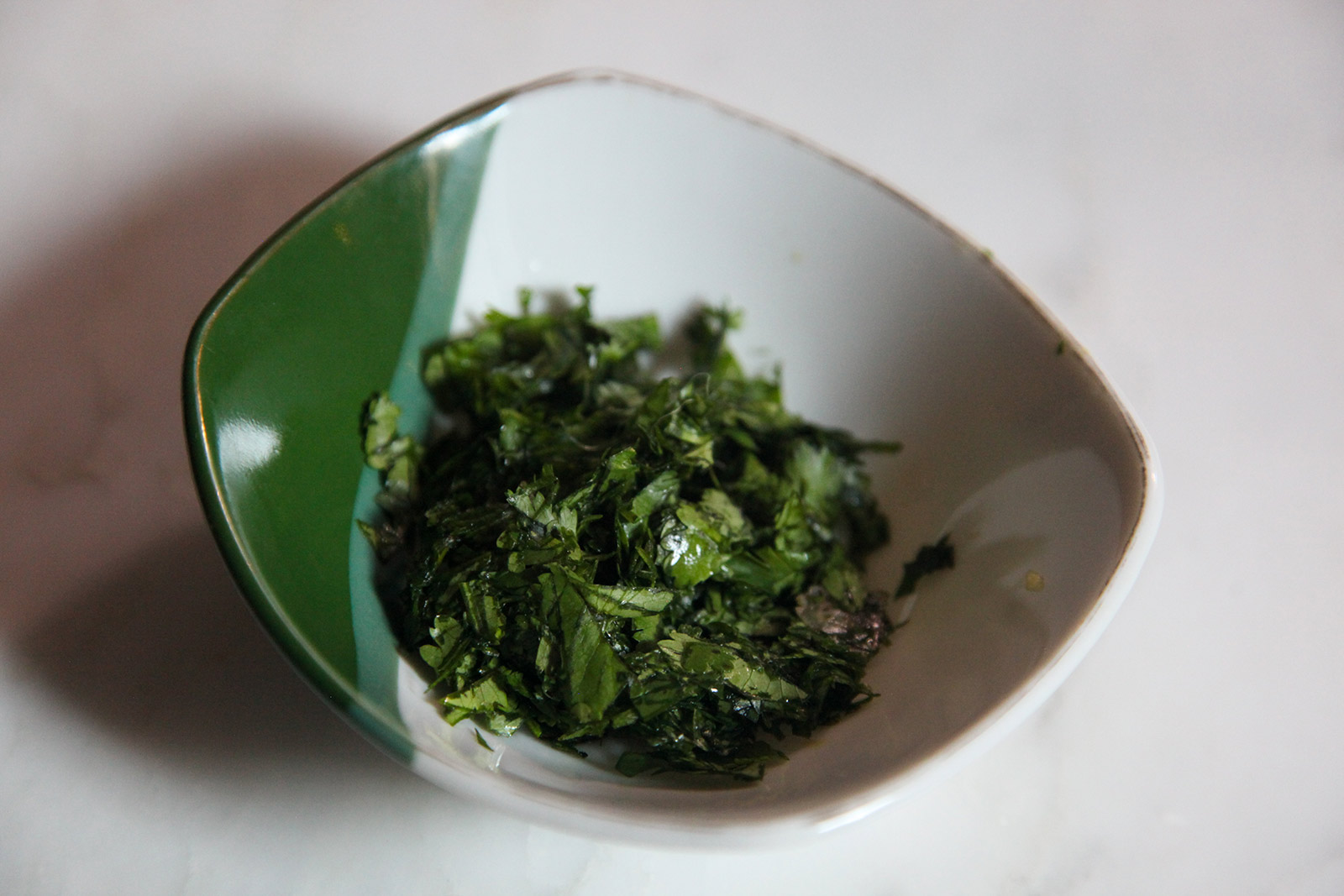
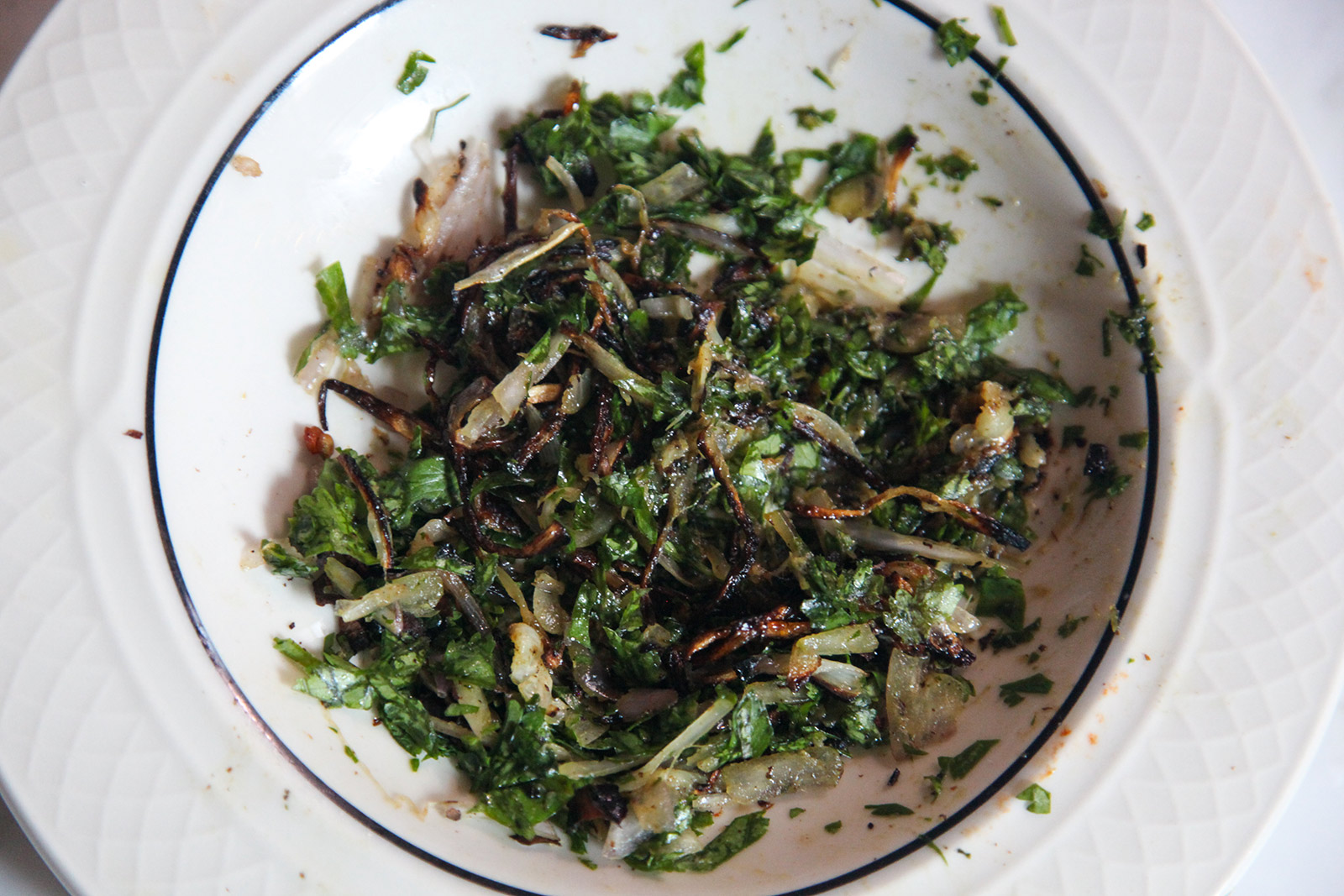

Tomato Bhorta – Smashed Tomato with shallots & fresh herbs
YIELDS: 1 cup of bhorta
INGREDIENTS
- 5 large tomatoes (approx. 4 cups unchopped)
- 2 dried red chilies
- 3 large cloves of garlic
- 1-2 shallots, thinly sliced, approx. 1/3 cup
- 2 tablespoons chopped fresh cilantro
- 1 tablespoon + 2 teaspoons vegetable oil
- ½ -1 teaspoon mustard oil (or to taste)
- ¾ teaspoon salt (or to taste)
- ½ teaspoon granulated sugar (or to taste) – optional*
* Some tomatoes are naturally sweet and you may not need to add any sugar. If the tomatoes are not sweet, adding a little sugar helps balance the taste.
METHOD
- Heat a flat pan on medium heat. When hot, add the dried red chilies and allow to char (a couple of minutes). Flip over and char the other side (total time will be approx. 5 minutes). The chilies will swell up, turn dark, and there’ll be a nice smoky smell from the pan. Remove from heat before they turn black to a plate and allow to cool.
- Peel the garlic cloves (don’t smash them). Add a teaspoon of oil to the same pan, fry the garlic cloves over medium-low heat, turning from time to time until softened, browned and slightly charred. Remove from heat to a plate and allow to cool.
- Add a tablespoon of oil to the same pan and heat on medium-high. When hot, add the whole tomatoes, cover the pan and cook, reducing heat to medium low.
- Turn over to ensure every side is cooked evenly. The skin will char and the tomatoes will soften. Keep pan covered.
- After some time the tomatoes will start disintegrating. Remove the peel from the tomatoes – I use a fork to pull off the skin as the tomatoes cook. Alternatively, you can remove the tomatoes from the heat, wait for them to cool down, then remove the skin, and then add back the tomatoes to the pan and cook.
- Remove cover from the pan. Using the back of a spatula, smash the tomatoes to help them break down completely. Keep cooking, uncovered, until the excess liquid has dried up and what remains is thickened disintegrated tomatoes. (The whole tomato cooking process will take about 30-35 minutes). Turn off the heat and wait for the tomatoes to cool down.
- In the meantime, peel and cut the shallot into thin slices (about 1/3 cup).
- Reserving half the shallots, sauté the remaining shallots in a teaspoon of oil in a separate pan until translucent and soft. Remove from the pan.
- Stem and chop cilantro leaves (2 tablespoons).
- In a plate, combine the charred dry chilies, browned garlic cloves, sliced raw shallots, sauteed shallots, and chopped cilantro. Smash well using a fork or your fingers – I prefer to use my fingers – it’s quite satisfying!
- Add in the cooked tomatoes, salt, sugar, mustard oil and mix well. Taste and add more salt if needed.
- Transfer to serving bowl or plate. Serve with plain rice. (Usually this bhorta will accompany other dishes on the table, such as fried fish, or a meat dish, other bhortas, and dal).
